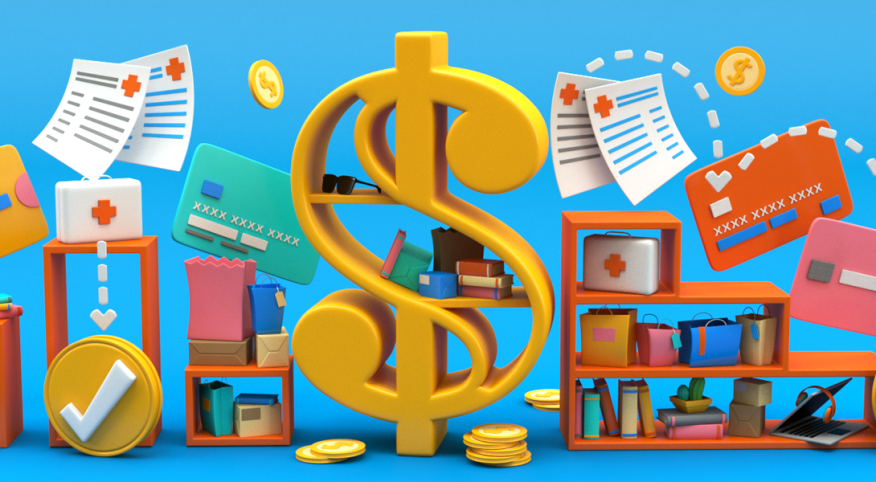With layoffs and pay cuts on the rise due to the coronavirus pandemic, most of us are prioritizing expenses and reducing our budgets to the bare essentials. According to a recent CreditCards.com poll, more than 110 million Americans had credit card debt prior to the pandemic, and over half of them have been carrying that debt for more than a year at an average interest rate of around 17 percent.
While it can be difficult to find a silver lining among all the sobering headlines, a recent Bankrate.com poll indicates that 47 percent of Americans have intentionally cut their spending due to concerns about the economy. Debt can be a huge stressor in volatile times like this, but if you can supplement your debt-payoff strategy with money saved from decreased spending or a stimulus check, you can eliminate your debt faster.
If you have been laid off, furloughed or experienced any other event that reduced your expected monthly cash flow, contact your lenders and make them aware of your situation. Banks, credit unions and other financial institutions may offer deferred payment options, loan extensions and fee waivers. Asking for assistance or relief allows you to save your cash and focus on essential purchases without incurring more debt.
However, if your income has not been affected and you have at least six months of expenses in an emergency fund, this may be a good opportunity to reevaluate your approach to debt payoff. Two popular strategies that are worth considering are known as the debt snowball and debt avalanche.
Debt Snowball
The debt snowball method was popularized by personal finance guru Dave Ramsey and recommends that you start small in order to quickly gain momentum. To do it, you focus on the debt that has the smallest balance. Once that is paid off, move on to the next smallest balance.
Getting started with the snowball method doesn’t require much research beyond looking up the balances for each of your accounts. List your balances in order from lowest to highest, then evaluate your budget and see where you can make cuts to your spending. Add all of the identified savings to the payment with the smallest balance. Meanwhile, continue to make the minimum payments on the other debts.
For example, let’s say you have $3,800 in debt split between three creditors: a $1,000 hospital bill that you’re paying $50 toward monthly, a $500 Visa balance on which you’re paying $25 monthly and a $2,300 Discover bill with $110 in payments monthly. In this scenario, you’re already spending $185 a month spread across the three obligations.
Now let’s say you are currently in a position to add an additional $75 monthly — perhaps money you’re saving since you no longer eat at restaurants, commute to work or go to the hair salon.
Using the debt snowball method, you would start making the minimum payments on everything except the Visa balance. The $75 of additional cash, plus anything above the minimum that you had been paying toward the other two bills, would be added to the $25 Visa payment until the debt is repaid. Once the balance is gone, you concentrate on the next debt in line by taking the entire amount you were spending on the Visa balance (minimum payment plus extra money) and diverting it to the hospital bill.
In 2012, when I was paying down $30,000 worth of consumer debt, I started with the snowball method. Paying down five-figures-worth of bills felt overwhelming, and while I knew I was making progress, I needed something more tangible to keep me going. The snowball method gave me a sense of accomplishment every time the amount I owed became $0. Each balance payoff reinforced that I was capable of eliminating debt. Confidence slowly replaced feelings of guilt and shame. Eventually I found my rhythm and switched to the debt avalanche method because I had a good handle on what I owed and how to pay it off.
Debt Avalanche
The debt avalanche method lacks the instant gratification that the debt snowball process provides, but it will typically save you more money over the long run. Instead of paying off the accounts with the lowest balances, the avalanche method suggests that you tackle the ones with the highest interest rates first. The goal is to reduce the amount of interest you’re paying over time.
Using the same example from above, let’s assume your $1,000 hospital bill had an interest rate of 7 percent, the $500 Visa account had an interest rate of 4 percent and the $2,300 Discover account had an interest rate of 22 percent. Under the avalanche method, you would pay off the Discover account first because it has the highest interest rate. Mathematically, the avalanche approach is more advantageous. But because the balance is bigger, it will take longer to pay it off and that can leave you feeling demoralized.
So which method should you use? There is no right answer. Are you motivated by numbers or quick results? If you’re more analytical and patient, you might prefer the avalanche method because it optimizes savings. But if you rely on short-term victories for inspiration, the snowball method may be for you.

Mora Vieytes










